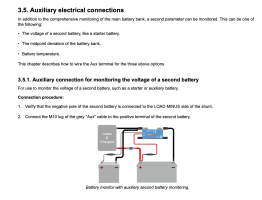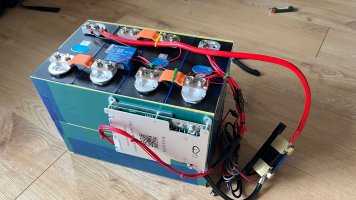Big Ted
I’ve searched, but not sure I’ve found any definitive answer.
2008 Cali SE. 2 leisure batteries.
I’ve managed to come across a Victron Cerbo unit, which is now installed. This connects to my Victron MPPT solar controller & onward to my VictronBattery sense device to.
With this new Cerbo unit I can access the data remotely when the Cali is in range of a known Wi-Fi network. (I don’t need this, but it’s nice to have)
I’m now thinking I’d like to install the Victron smartshunt, again I don’t need it, I’d just like to complete the family!! But the question is where/how?
Has anyone done this on an SE?
From what I see the newer Cali’s may have 2 existing VW shunts, I believe I only have one on the rear battery.
Victron documentation suggests the shunt should be connected directly to the ‘-‘ battery on one side of the shunt and all the connections which were on the battery should be connected to the other side of the shunt.
Other posts on this forum suggest putting additional (non Victron) shunt in series with the existing one.
Has anyone installed one and if so, how?
(I’ll post a review of the Cerbo unit later, as it’s also paired up to some Bluetooth temperature sensors and soon to a replacement fresh water tank sensor)
2008 Cali SE. 2 leisure batteries.
I’ve managed to come across a Victron Cerbo unit, which is now installed. This connects to my Victron MPPT solar controller & onward to my VictronBattery sense device to.
With this new Cerbo unit I can access the data remotely when the Cali is in range of a known Wi-Fi network. (I don’t need this, but it’s nice to have)
I’m now thinking I’d like to install the Victron smartshunt, again I don’t need it, I’d just like to complete the family!! But the question is where/how?
Has anyone done this on an SE?
From what I see the newer Cali’s may have 2 existing VW shunts, I believe I only have one on the rear battery.
Victron documentation suggests the shunt should be connected directly to the ‘-‘ battery on one side of the shunt and all the connections which were on the battery should be connected to the other side of the shunt.
Other posts on this forum suggest putting additional (non Victron) shunt in series with the existing one.
Has anyone installed one and if so, how?
(I’ll post a review of the Cerbo unit later, as it’s also paired up to some Bluetooth temperature sensors and soon to a replacement fresh water tank sensor)















